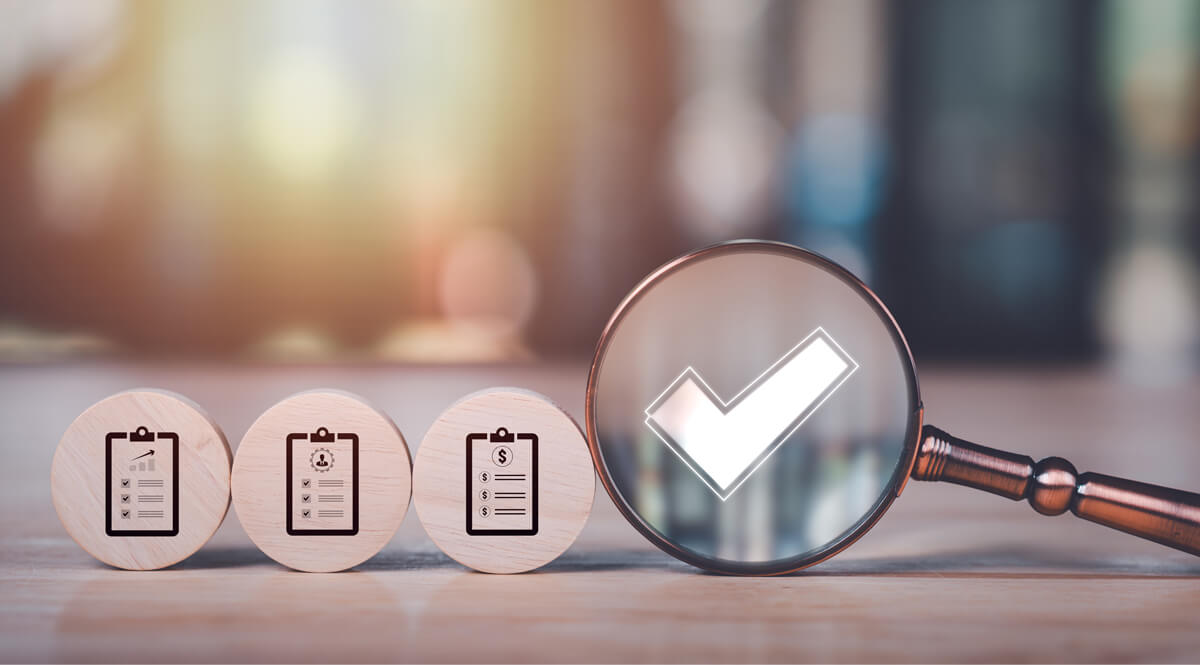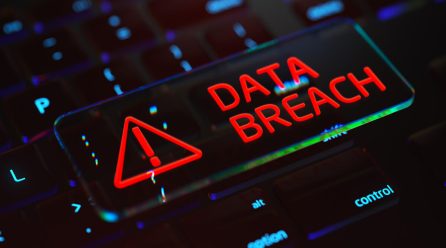While audits are a great tool to help management better understand an organisation’s performance and ensure compliance, they are a rather daunting task requiring time, effort, and resources. The findings from audits and any resulting non-conformances can also create a mountain of follow up tasks and remediating actions that must be addressed quickly.
Managing audits and their findings using manual processes can be a challenge. In this blog we explain how the right GRC software can help automate this seemingly complex, time-consuming process and ensure efficient compliance management, better risk mitigation, and improved organisational performance and audit outputs.
Companies usually tend to undergo a variety of audits. Internal audits conducted by an organisation’s staff audit committee are often used to evaluate the business’s operational effectiveness, risks, control environment, and compliance with industry-specific mandatory regulations and laws. While external audits are undertaken by a third party. These are often conducted by representatives from external regulators, government officials and professional auditing services with an aim to prove compliance with mandatory regulations and adopted frameworks like ISO standards and cyber certifications. External audits are often required by stakeholders and investors to determine the reliability and transparency of the firm’s operations. Passing external audits can be essential for some organisations who must maintain these certifications to do business.
Audits are critical in the Financial Services sector. In this highly regulated industry, audits are not just about ensuring an organisation’s financial credibility. Regular audits should be used to evaluate a company’s internal control systems, which are the processes and procedures to ensure that financial transactions are recorded accurately, and assets are protected. By identifying weak internal controls through auditing, financial organisations can mitigate risk errors, prevent fraud and asset misappropriation, improve stakeholder confidence, help safeguard financial resources, and maintain the required certifications needed to offer their services.
Regardless of the type, auditing activity is critical for any business aiming to maintain high standards, transparency, and accountability in its operations. By identifying potential issues before they become major problems, proving compliance with regulations & standards, and achieving certifications, companies can save time and money while avoiding legal headaches down the line.
Thanks to the complexity of today’s businesses and the volume of risks and compliance requirements, audit scopes are steadily increasing, and the pressure is on to prove compliance and resolve non-conformances quickly. This can leave audit teams with little time to conduct a thorough analysis, putting the organisation at risk. Integrated GRC software technology can help by facilitating audit management processes for both internal auditors and those being audited.
How can technology automate the audit process?
GRC software platforms offer audit functionality that provides organisations with a framework to build a centralised register of all their audits online and schedule them upfront. The system automatically sends reminders to the relevant stakeholders when audits are due – so the necessary steps can be taken – driving accountability.
Audit management software helps organisations to identify and mitigate audit related risks more effectively by providing real-time monitoring of key processes, controls, and non-conformances. This enables auditors to identify potential issues before they become significant problems. Audit software can also support compliance activities by helping organisations comply with regulatory requirements and industry standards by providing a framework for documenting and reporting on audit activities.
What happens after an audit?
Findings of all audits are captured in the tool and automated workflows are used to implement recommendations and log actions to complete the audit cycle. Workflows linked to your active directory follow predefined escalation routes to ensure audit issues are escalated quickly. From there, a case management workflow will enable teams to document how and when the issue was resolved – providing clear visibility for both internal stakeholders and external auditors.
Furthermore, when managing audits in a GRC platform, firms can link audits and their findings back to the relevant compliance obligation to provide a live view of compliance status. In many cases ensuring compliance requires passing an audit, so it makes sense that these areas are linked and managed holistically. Similarly, audit findings can also be mapped to the risk register. Audit failures represent significant risk to the business, so it is important to make sure any audit related business risks are captured and managed as part of the organisation’s wider enterprise risk management program.
This comprehensive post audit process provides a complete history of all your audits and their findings and any outstanding actions. Real-time dashboards and reports make it easy to understand audit status and findings, spot trends, identify problems, and conduct investigations. Audits and their findings can be linked back to the relevant compliance obligations and risks – adding another layer of depth to the process. This comprehensive mapping enables businesses to identify and understand the risks relating to a failed audit or the impact of non-compliance on operations.
Managing audits in one holistic platform in a consistent format improves operational excellence and ensures continuous improvement. Firms are able to build a complete history over time of all their audits and the subsequent findings and remediating actions ensuring the same failures and issues are not repeated.
Further Automating the Audit Process with GRC Software
Here are some specific examples of how GRC software can automate the internal & external audit process:
Scheduling audits: Firms can plan and schedule all their audits upfront in the platform. Teams complete simple online forms to document the required steps and checks needed for each audit – capturing critical actions, milestone dates and stakeholders involved. Audits with similar requirements can be cloned, making audits easy to schedule. Automated notifications alert staff when an audit is approaching and when they have upcoming actions relating to audit activity – ensuring all steps are completed on time.
Collect and store audit data: Auditing teams can use GRC software to store all relevant documentation related to audit findings, action plans, and remediating actions in a centralised repository. This data can then be used to support future audits – ensuring that any non-compliances from previous audits are rectified before any future audits.
Manage audit findings: For findings that could result in the need to amend processes, train staff, and implement safety measures, the agreed follow up actions can be captured in the platform and allocated to the relevant individual or team – by linking to your active directory. Each action or non-conformance is escalated to the relevant stakeholders and can be managed under its own automated case management workflow with clear timelines. This enables teams to understand how the action or task is progressing, and management can report on outstanding actions and progression status.
Create and track an audit trail: Workflow automation features can trigger reminders, escalations, and notifications to ensure the timely completion of tasks and adherence to deadlines. GRC software can help teams prioritize audit findings based on their potential impact on the organisation’s objectives and level of compliance risk. Teams can conduct risk assessments and assign risk ratings to findings, allowing them to focus resources on addressing high-risk compliance issues first.
Generate audit reports: GRC software offers robust reporting and analytics capabilities, allowing teams to generate customised reports on audit findings, action plan status, and remediation progress. These reports can be shared with stakeholders, management, and auditors to provide transparency and demonstrate compliance efforts.
Why manage the audit process as part of your wider GRC program?
One of the key benefits of managing the audit process as part of your wider governance, risk, and compliance program is the ability to link audit findings to your compliance process and risk register. This will help to identify risks relating to failed audits, understand compliance with regulations & standards, and evaluate the effectiveness of controls.
Integrating the audit process into your wider GRC program can also help auditors to efficiently manage and control the audit process, as well as monitor and report on the results of audits. Automating the audit process using GRC technology can help increase the accuracy and completeness of audit findings and ensure that the audit is conducted according to relevant regulations and standards.
When the audit process is augmented with GRC technology automation and robust reporting capabilities, auditing teams can spend less time planning, scheduling, preparing, assessing, and tracking audits, and more time providing insightful recommendations – adding more value to the organisation. Auditing teams can also conduct faster audits, and more accurate reporting when using GRC technology. Online forms make it easy to capture audit findings and automated workflows ensure the swift escalation and resolution of non-conformances.
A GRC platform centralises risk, compliance, and operational data and links it to audit findings, giving auditors instant access to the people and evidence required to satisfy audit criteria.
Choose the Right GRC Solution for Your Organisations Auditing Requirements
Auditing is an essential part of running a successful business, especially in highly regulated sectors with high operating standards. Auditing helps to identify potential risks and areas for improvement while ensuring compliance with regulations and standards.
Using GRC technology transforms the traditional audit process by providing a more comprehensive, streamlined, and efficient approach to auditing. By leveraging the right GRC tool, organisations can speed up the audit process, improve compliance, and quickly address non-conformances. To learn more about how the Camms platform can automate your auditing processes, request a demo today!





